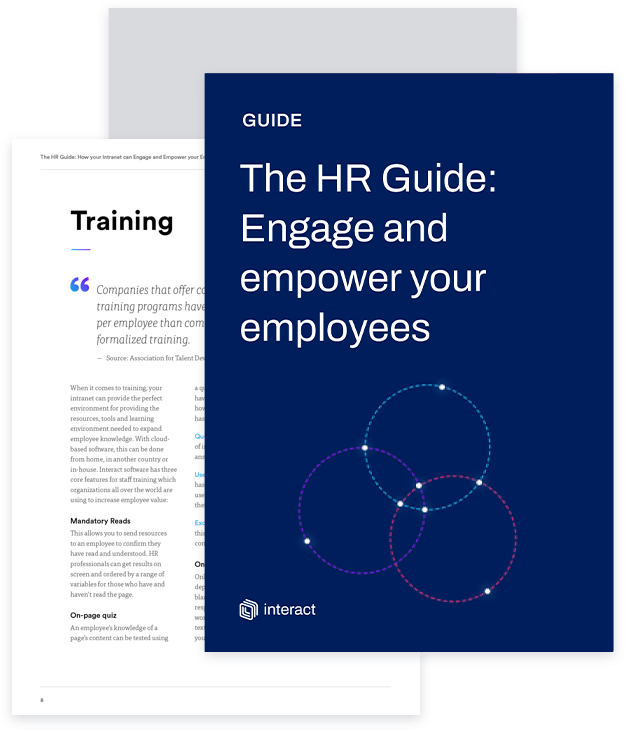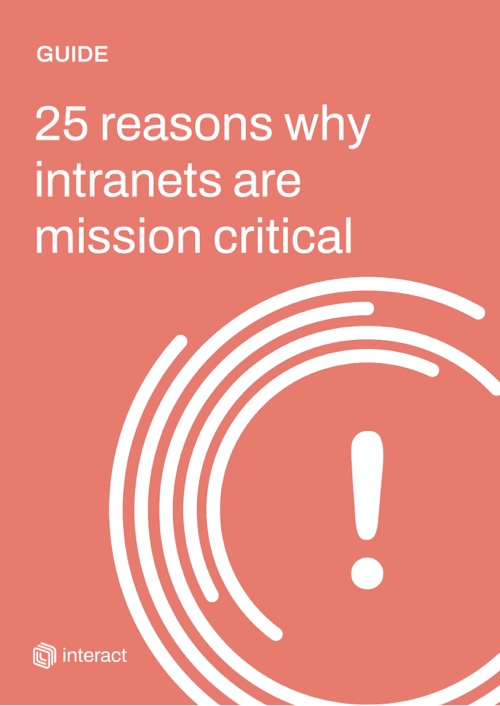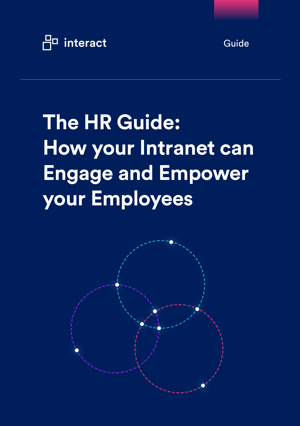Job sharing is on the rise as more employees seek flexibility, greater work-life balance and a way to manage work-related stress. It has its rewards, but also potential challenges. As an employer, how can you ensure your job share staff are supported?
The lure of a steady salary and job stability, while also having the flexibility to take care of dependents, advance education or simply enjoy better work-life balance, is understandable.
Alongside the rise in part-time and flexible working options, job sharing is an attractive option that is increasing in popularity among organizations worldwide.
Job sharing is a work arrangement where two employees share the duties and responsibilities of a full-time position.
Managed effectively, it can deliver significant benefits for both employer and employee. However, as an employer, it can also present additional logistical challenges. Successful management of job share employees is crucial to its success.
23 ways your workplace can use a mission-critical intranet to achieve its objectives
Why should organizations champion and support job sharing?

At a glance, it’s probably easy to pick out the benefits for the staff who are sharing the responsibilities of a role: particularly in today’s climate where childcare costs continue to escalate, 80% of employees report feeling stress at work, and the demand for greater work-life balance continues to grow.
The national average cost of childcare is between $9,000 to $9,600 a year in the US; however, it can be as high as $20,415 for center-based care in Massachusetts.
But given the administrative burden of having two employees instead of one, the logistics of managing the process and individuals, and the potential cost associated with cross-over time for staff or doubling up of benefits, where is the value for employers?
Actually, the case for job sharing is strong and well-supported. Among the returns, organizations who facilitate successful job shares see:
- Higher levels of job satisfaction and engagement with both the role and organization as a whole
- Improved talent attraction and retention, particularly if job sharing has been proposed as a solution for an employee who might otherwise consider leaving; job sharing employees are also more loyal and see a longer than average tenure compared to other staff
- Better work-life balance reduces incidences of stress-related absence or underperformance, improves motivation, and enhances productivity
- With two staff sharing responsibilities, there is a greater level of accountability which also creates higher standards of work
- With the correct arrangement, organizations have greater role coverage during absence
- Doubling up of talent: with job share employees you get two distinct sets of skills, experience, and talent
- Due to the shared nature of the role, job share employees also deliver higher levels of innovation, problem-solving, and have a greater capacity to learn from one another and improve
Job sharing can work at any level, with one notable example being the CEO of cancer charity Macmillan, Lynda Thomas, and her Director of Marketing and Communications, Hilary Cross.
The pair began job-sharing in the position of Head of Media and Campaigns in the noughties and were promoted jointly four times in a decade to reach board level as joint Director of External Affairs in 2007. Although the two now work separately, the arrangement has seen the pair complete 14 years together at Macmillan, showing the loyalty it can foster.
Get the most from your intranet
The role of HR: supporting a job share
Facilitating a successful job share does require some additional considerations, but as the potential gains highlight, it’s worth the effort. If you’re going to be rolling out a job share role in your organization, here are a few things you can do to ensure the process is handled successfully.
#1. Clearly define the collective role description and responsibilities

Job share staff should be clear on the expectations for the combined role.
Defining responsibilities before initiating a job share arrangement will ensure the role is serving the business and that those all-important outcomes or objectives are set out. By clearly defining the responsibilities of the role, you’ll also ensure the skillset of individuals matches.
#2. Determine how to divide the role
Next, redefine role descriptions depending on the model that is agreed upon for your employees. Who will be doing what?
For example, is work going to be divided according to expertise/skillset – the ‘island’ model? Or are all tasks and workload going to be divided equally – a ‘twin’ model? Are both employees doing the same number of hours, or do some responsibilities gear themselves more towards particular times of the week, for example?
Having both a collective and individual role descriptions, which are checked against each other, will keep everyone focused on requirements and expectations. Employees have collective accountability for the role outcomes, but also a clear understanding of their individual part to play in achieving those.
23 ways your workplace can use a mission-critical intranet to achieve its objectives
#3. Address the key blockers and issues upfront
Consider the main objections or challenges that could cause disruption or disgruntlement, potentially interfering with the job share relationship: and create clear guidance around these as part of the contractual agreement with staff.
For example, how will you fairly address the division of bank/national holidays? What is the compensation process for overtime worked?

If the role has performance-related bonus payments and in the event of payrises, you need to ensure staff are aware that their individual performance is considered alongside the collective role outcomes. This will prevent either job sharer from benefitting from, or being penalized by, the others’ performance and ensure accountability and fairness.
#4. Have a plan in place for leaving
Morbid as it is to consider upfront, having a contingency plan in the event of one of the sharers leaving the role is crucial.
A reasonable procedure and response for the remaining job sharer would be to offer the full-time position in the first instance; or to make reasonable effort to find an alternative job share partner if this isn’t an option for the employee. Assign a timeframe for this and set out the responsibilities for the remaining employee during this time.
In the event that another job share partner can’t be found and no alternative position is available internally, ensure that the right to terminate is set out clearly in the contract. So long as you have taken reasonable steps and followed a clear, defined procedure, this is an acceptable last resort.
#5. Provide support and guidance for line managers
Ensure the individual responsible for direct management of the job sharers is given practical support, particularly around goal setting, performance management, conflict handling and potential models for the job share.

While the overall goals and objectives for the role are a collective responsibility, it’s important to approach the staff as individuals.
What works for one in terms of preferred communication, work patterns, motivation and more, won’t necessarily work for the other. That line between the shared and the individual can be challenging for line managers to navigate.
Clear, transparent and honest communication between manager and employees on a regular basis will help to identify and address any potential issues before they escalate.
Get the most from your intranet
#6. Communicate the role to the wider business
Particularly if job-sharing is a new concept in your business, there may be negative preconceptions or wariness among other staff. HR has a responsibility to address any potential push-back upfront.
Take the time to explain why the decision has been made, how it will work in practice and the benefits to the organization. Clarify how workflows and management of projects or deadlines are to be handled across the two individuals, along with reporting structures.
Ensure senior leadership is on board and advocates for the arrangement; include updates from the job share employees into a regular communication plan to give visibility of the role and increase trust and buy-in from all staff.
23 ways your workplace can use a mission-critical intranet to achieve its objectives
#7. Give them the right tools and communication models
Communication is absolutely key to the success of any job-sharing arrangement.
Ideally, the employees will have a dedicated handover time where roles overlap sufficiently to allow for both individuals to speak in person and catch up on important tasks or issues.
However, there will be things that inevitably get forgotten, or crop up; verbal communication alone also doesn’t factor in collaboration on specific tasks, projects, documents and more, which will require content or written information to be associated with them.

Assess your digital workplace offering and how it can best support job share employees. Can they collaborate on documents easily, adding feedback or notes where needed? Can they assign or review outstanding tasks or projects? Can both employees equally access top-down business communications such as news and announcements, even if they aren’t in office?
Communication is absolutely key to the success of any job-sharing arrangement.
You may need a variety of different communication and collaboration tools to meet specific needs. To avoid tech fatigue, a solid digital workplace strategy that minimizes productivity impact of ‘software switching’ or multiple logins is crucial.
Ensure you provide clear communication models and establish expectations around contacting each other outside of working hours. In today’s always-on digital workplace, there’s an even bigger temptation for job share colleagues to continue communicating even when not working; this can quickly lead to frustration, disengagement and burnout.
Set boundaries around when it is – and isn’t – appropriate to break that boundary and contact each other.
#8. Regularly review and revisit the arrangement
Adopting an agile mindset to the concept of job sharing is crucial; particularly as both individuals will have specific reasons or circumstances for electing for this particular model of working.
There may be external factors that could change at any time, making the arrangement no longer beneficial or even viable. However, the partnership between those employees can often foster loyalty and sense of responsibility that can make it more different to speak out when one person needs to change or leave.
Potential conflict between the job share staff is also a high risk, which can derail the entire arrangement and have repercussions for the wider staff.
Try to embed a culture of open conversation between staff and regularly schedule both individual and group meetings to establish any challenges or potential barriers to success. Keeping the conversation going is the only way a job share arrangement can work.
Is a job share the right move for your organization?

A successful job share is based on a true partnership between the employees involved.
It’s not right for everyone: before agreeing to the arrangement, both individual and leadership need to consider the way those staff work, their compatibility with each other, and the wider business impact.
However, executed correctly, it can also deliver significant returns for both business and staff. Many job sharers report developing close working relationships with their ‘other half’ and continuing to work with one another above and beyond their original arrangement for many years.
While job sharing is still not perceived as a common arrangement in today’s workplace, its popularity is continuing to increase. HR and senior management should be adding it to the flexible working options list and putting plans in place for those looking for alternative ways of working.




